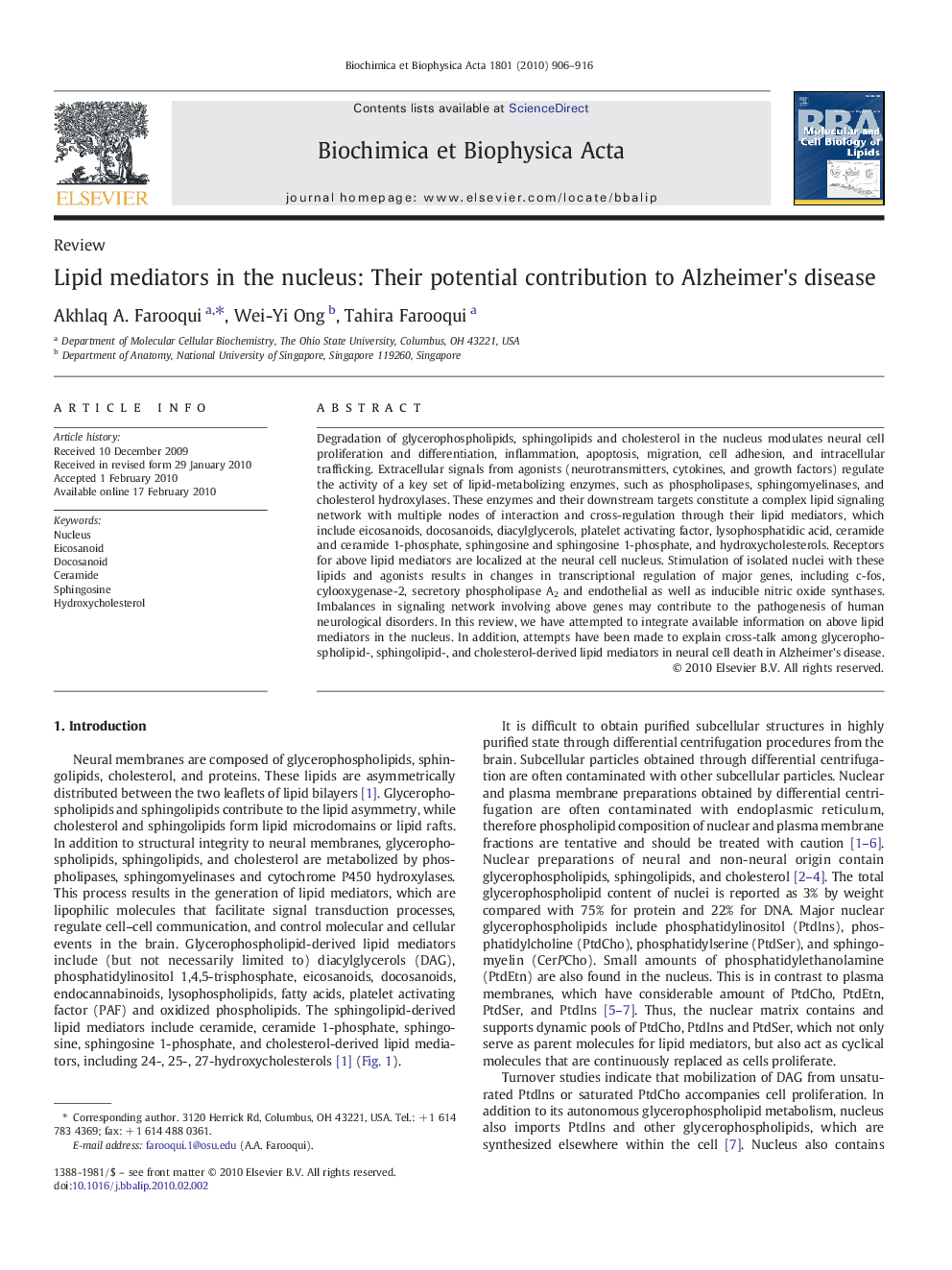| Article ID | Journal | Published Year | Pages | File Type |
|---|---|---|---|---|
| 1949671 | Biochimica et Biophysica Acta (BBA) - Molecular and Cell Biology of Lipids | 2010 | 11 Pages |
Degradation of glycerophospholipids, sphingolipids and cholesterol in the nucleus modulates neural cell proliferation and differentiation, inflammation, apoptosis, migration, cell adhesion, and intracellular trafficking. Extracellular signals from agonists (neurotransmitters, cytokines, and growth factors) regulate the activity of a key set of lipid-metabolizing enzymes, such as phospholipases, sphingomyelinases, and cholesterol hydroxylases. These enzymes and their downstream targets constitute a complex lipid signaling network with multiple nodes of interaction and cross-regulation through their lipid mediators, which include eicosanoids, docosanoids, diacylglycerols, platelet activating factor, lysophosphatidic acid, ceramide and ceramide 1-phosphate, sphingosine and sphingosine 1-phosphate, and hydroxycholesterols. Receptors for above lipid mediators are localized at the neural cell nucleus. Stimulation of isolated nuclei with these lipids and agonists results in changes in transcriptional regulation of major genes, including c-fos, cylooxygenase-2, secretory phospholipase A2 and endothelial as well as inducible nitric oxide synthases. Imbalances in signaling network involving above genes may contribute to the pathogenesis of human neurological disorders. In this review, we have attempted to integrate available information on above lipid mediators in the nucleus. In addition, attempts have been made to explain cross-talk among glycerophospholipid-, sphingolipid-, and cholesterol-derived lipid mediators in neural cell death in Alzheimer's disease.
